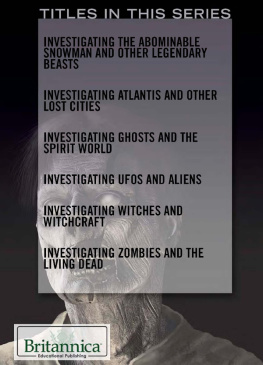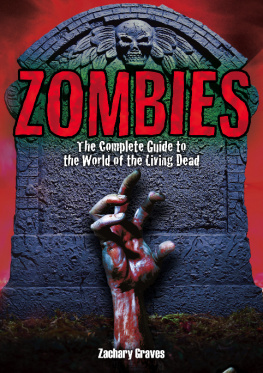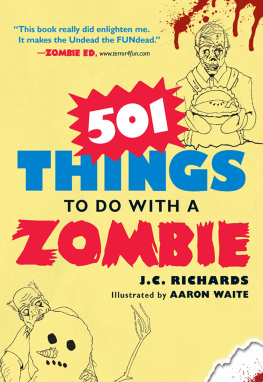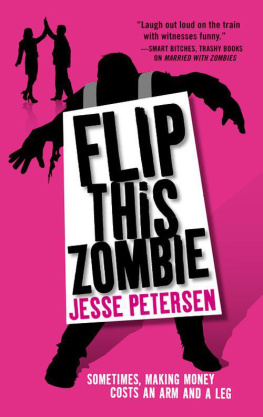Zombies
A HUNTERS GUIDE
JOSEPH A. McCULLOUGH
Contents
Introduction
This book is dedicated to the men and women who have lost their lives defending our right to rest in peace.
In 2004, the United States Army granted me a rare privilege, a tour of the barracks and training grounds of the 34th Specialist Regiment at Fort Bragg in North Carolina. I visited the base on a quiet Sunday morning, when most of the soldiers were absent on leave. My guide was a young lieutenant, a two-year veteran of the unit. He answered my questions with a laugh and a smile as he showed me around. Midway through the tour, we entered the motor pool where the Nightmen stored their Humvees and trucks. As I touched the armored sides of the vehicles, I realized that they were covered in scratches and claw marks.
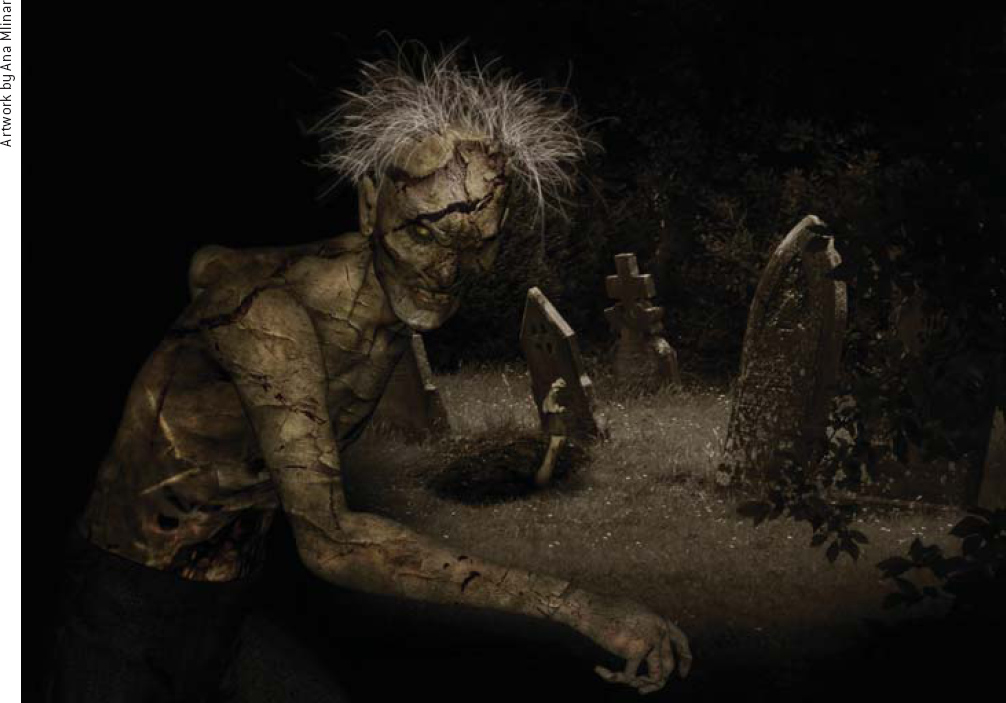
Standing in that garage, my whole perception of the war against the undead changed. Up to that point, my study of zombies had always been a dry, if somewhat rare, academic pursuit. In dusty libraries it is easy to forget that zombies are creatures of rotting flesh and congealed blood. While I had battled for the pride of publication, the men and women of the 34th had stood on the frontlines, protecting us all from the worst nightmares of our childhood.
Since that day, I have devoted my time and energy to aiding the professional zombie hunters, through both academic research and potentially dangerous field work. I have traveled to several hot zones, escorted by the containment teams of different nations, in an effort to obtain useful information. Despite owning an expensive 9mm pistol, I have never fired a shot at a zombie. I have run away from many.
Ive come to realize that unlike those battered vehicles in the 34th motor pool, the scars of professional zombie hunters run deep, and the worst cannot be seen. The Zombie Wars have claimed many victims, and not all of them have died on a battlefield. While fiction and film have glorified zombies and zombie hunters, the truth is much grimmer.
I have written this book in an attempt to educate people about the true horrors of the zombie menace. The book opens with an individual analysis of each of the five main zombie varieties, while at the same time providing a short history of the zombie threat. It then covers some of the organizations that battle the undead and the weapons and tactics they employ.
It is my hope that readers will obtain a better understanding of the immense threat posed by the undead and gain a new respect for those who stand on the frontlines of the Zombie Wars.
Necromantic Zombies
The myths and legends of the ancient world are filled with stories of necromancers who could raise the dead and command them to do their bidding. These sorcerers often used their death magic to seize positions of power, becoming lords and kings and terrorizing their subjects with their undead armies. The great cities of Babylon and Nineveh particularly served as capitals of the necromantic arts, and from these centers the knowledge spread to the farthest corners of Europe and Asia. But in the early centuries after Christ, as his new religion began to take root in the Roman Empire, the art of necromancy fell into decline. The Christian faith viewed necromancy as the most vile and heinous of the ungodly magics. The early popes worked tirelessly to destroy all necromantic knowledge and to hunt down its practitioners. Still, necromancy survived. It is mentioned by Gildas in the dark days of Britain and in the accounts of numerous crusading knights. However, it was in the wilds of western China and the mountains of the Himalayas that the knowledge found safe haven and slowly started to filter back into Europe.
While Europe remained unified under one church, it remained relatively safe from the terrors of necromancy. True, isolated incidents that challenged the champions of chivalry were not uncommon, but gone were the vast hordes of shambling dead that had formed the armies of many an ancient tyrant. The necromancers of the European Middle Ages proved weak magicians, only able to command a few reanimated zombies or skeletons. Unfortunately, a major revival came with the dawn of the modern world.
In the sixteenth century, Christian unity shattered, first with Martin Luther and then with countless successors. In this time of chaos and confusion, the dark arts of necromancy crept back into Europe, thriving amidst a new time of bloodshed. Still, it was not until the vast slaughter of the Thirty Years War that necromancers once again attempted to employ their death magic on a vast scale. Even a casual reader of the history of this time is likely to stumble across a reference or two. Perhaps the most common, and certainly the most terrifying, are the sky battles. Found in the manuscripts of both commoners and lords, sky battles often occurred on a battlefield a day or two after the armies had moved on. Different accounts paint wildly different pictures, but all agree that the dead rose up once again and renewed their battle. A few people mention the living generals in these battles, but no one seems to know fully what they meant. It is only now, with 400 years of hindsight that we can understand these sky battles as the first steps in a new age of necromancy. Clearly some of the ancient knowledge had been lost. The new necromancers could raise up armies, but they could not yet control them. The fractured state of Europe proved the perfect testing ground to run their experiments, a land covered in corpses and lacking central authority.
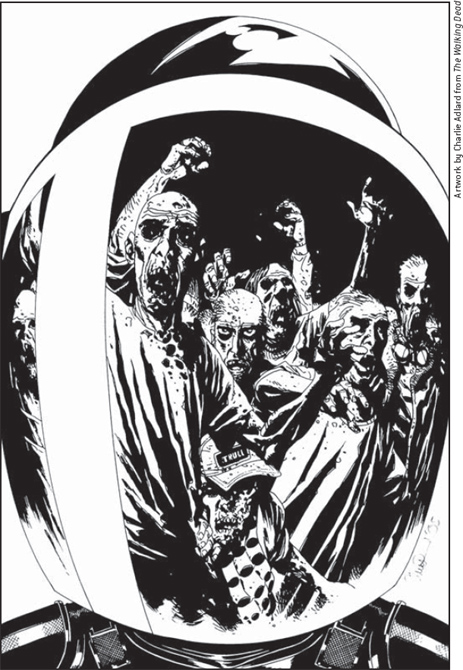

Soon thereafter it spread to the New World and established a permanent foothold. Napoleon, to his credit, seems to have understood the dangers of necromancy and for a while managed to nearly push it back out of Europe. Unfortunately, many of his enemies fled to Russia, and during Napoleons invasion and subsequent retreat from Moscow, they exacted a terrible revenge. To this day it is unknown how many Frenchmen or their allies were killed by the dead hands of one of their own army.
With the allied victory at Waterloo, Europe settled into a period of outward expansion, and thus unwittingly spread necromancy to all corners of the globe. In America, the necromancers for the first time showed a sense of patriotism and waged their own war under the cover of their Civil War. While the number of necromantic incidents in this conflict are far too numerous to mention, it is perhaps worth noting that the Second Battle of Gettysburg remains the single most recorded and studied clash of necromantic forces in history.
The twentieth century actually witnessed a reversal of fortune for students of necromancy. Perhaps the death wizards had overplayed their hand in the Civil War, for governments around the world began to recognize the threat and the first government-backed zombie-hunter teams were formed. Also, numerous private and religious organizations joined in the fight. By World War I, the necromancers were on the run, and they played only a limited role in the Great War. In World War II, their services were shunned by the Allies, and many took refuge in the welcoming arms of Nazi Germany (see ).
Since World War II, necromancy has remained a constant low-level threat the world over. Free governments have worked together to fight against these dark wizards, and Communism also proved a bitter opponent of magic in all its forms. Today it is estimated that there are between 200 and 1,000 practicing necromancers in the world, with Africa having a greater number than anywhere else. For many reasons discussed below, necromantic zombies do not pose the same level of threat as the newer varieties, but they are still a dangerous force that has been driven to the brink of extinction before only to find new life in a new era.






